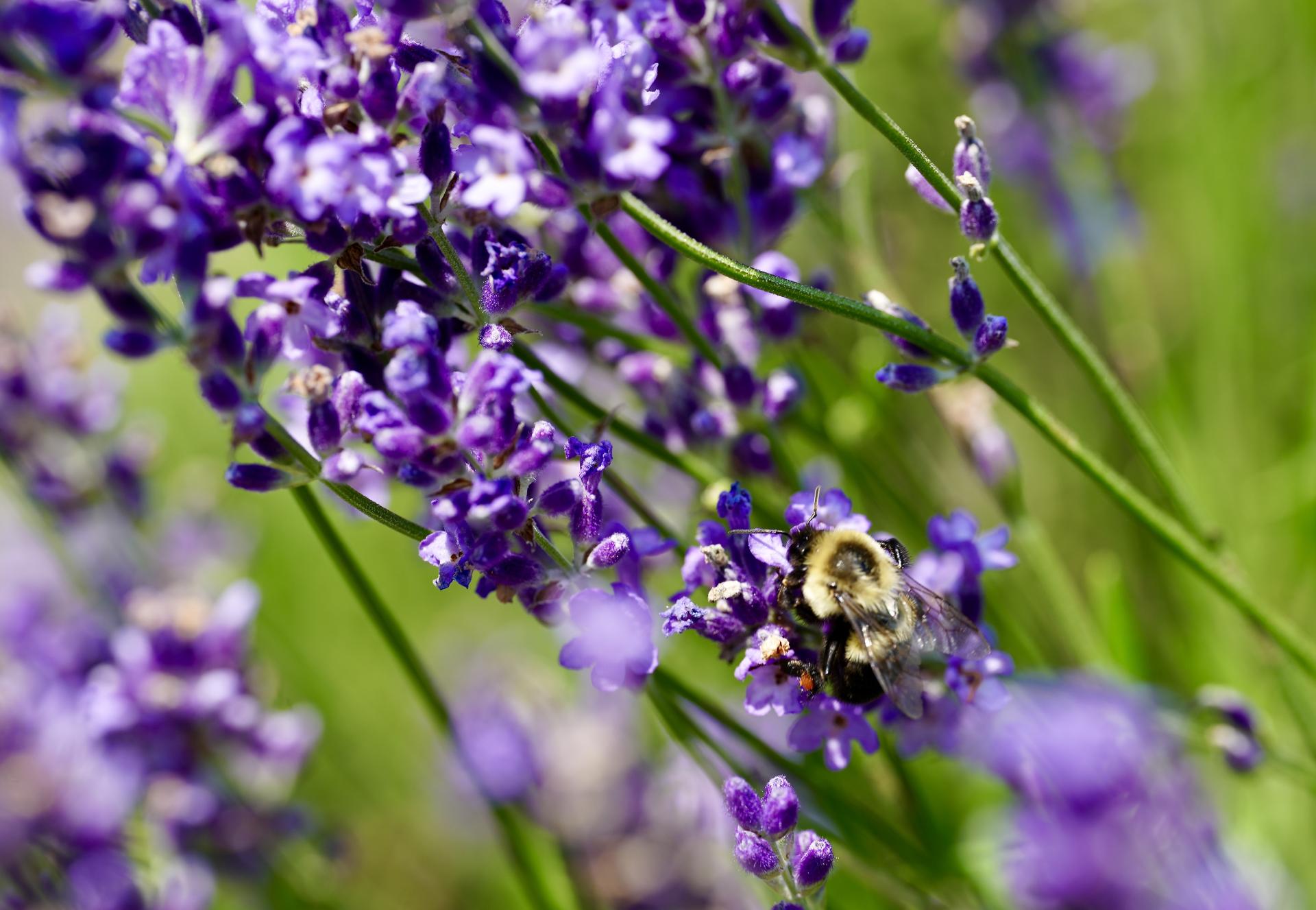You are here
Herb of the Week: Lavender
Herb of the Week: Lavender
At early dawn
the fragrance of summer
sweet lavender
By Barbara Smith
With this haiku, we begin our story of lavender, surely among the most well-known and widely used herbs. This member of the mint family is native to the Mediterranean region, but lavender may be cultivated wherever the growing conditions are suitable — in full sun and well-drained (or rocky) soil. Although we garden in Zone 5B, we can still grow and enjoy certain lavender varieties. Check out the lavender plantings in the BBG Herb Display Garden. There, lavender plants are located in full sun with good drainage surrounding the flower beds. The beautiful flowers attract beneficial pollinators, and the plants are deer resistant.
While there are many lavender types, the two main ones are English (or common) lavender (Lavandula angustifolia) and French Lavender (Lavandula spica). Common lavender is widely used in finer perfumes; French lavender is used more often in soap. Lavandin, L. xintermedia, is a hybrid of common lavender and spike lavender and is increasingly substituted for both.
The fragrance of fresh lavender flowers is light and clean, though floral and sweet. Its association with “wash day” is a long one. Its name comes from the Latin lavare, which means “to wash” — not only washing clothes and household linens but also bathing. When dried, lavender blossoms strewn in drawers or linen cupboards will deter insects and moths that would spoil the fabrics. Shaker communities are said to have laid washed clothing and linens on lavender bushes in the hot sun to absorb the scent.
Historically, lavender fragrance has been used for treating hysteria, nervous palpitations, hoarseness, toothaches, and colic. Until World War I, lavender was used in smelling salts and as a disinfectant for wounds.
Take care when choosing lavender plants for your garden to ensure the variety you purchase is suitable for the zone and conditions where you live. English lavender is quite cold tolerant and can be grown in Zone 5. You can mimic Mediterranean conditions for your lavender plants by placing gravel or small stones at the base of the plants, but away from the crown to avoid root rot. Lavender grown in shade or with dark-colored mulches are subject to wilt, spindly growth and poor fragrance. Lavender needs little pruning. Around late May, the Herb Associates will prune out any dead or damaged material and do some snipping to encourage new growth. To overwinter your lavender garden successfully, remove accumulated fallen tree leaves from around the plants’ base so as not to encourage root rot.
When to harvest lavender? Choose a day when the weather is fair, because a damp or rainy day is likely to cause the florets to brown and fall; harvesting early in the day or evening is preferred. Hang bunches from the rafters in the attic or shed or set them on screens in a shady, airy place with a high temperature. (An upcoming article will discuss drying herbs.) Any lavender stems not to be dried should be cut off when the flowers are spent. At the same time, trim slightly into the foliage to stimulate growth. Discontinue this practice after August 1, to allow for any new growth to harden before autumn. (If your plants are in containers, bring them into your cellar or garage to overwinter them.)
Dried lavender flowers are often featured in craft arrangements, including wreaths and bouquets, potpourris and sachets. Lavender is also used as a culinary ingredient in baking (try lavender shortbread cookies) or infused in honey or sugar. The Herb Associates make a Herbes de Provence seasoning blend, which includes lavender; and two varieties of sachets that feature lavender. These items are available in the BBG Gift Shop.
We hope you’re inspired to grow lavender in your garden and enjoy its many attributes!
The Berkshire Botanical Garden’s Herb Associates began in 1957 and have been making and selling products for the benefit of BBG ever since. At BBG, the Herb Associates oversee a display garden and production garden, both located near the Center House. Members/volunteers meet every Tuesday morning during the late spring through mid-autumn each year, coinciding when the gardens themselves are open to the public. Members plant, weed and tend the gardens, as well as harvest and process the variety of herbs.
Help Our Garden Grow!
Your donation helps us to educate and inspire visitors of all ages on the art and science of gardening and the preservation of our environment.
All Donations are 100 percent tax deductible.





